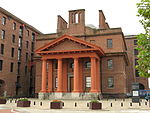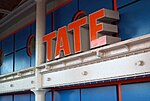Border Force National Museum

The Border Force National Museum (previously - UK Border Agency) is located in Liverpool, England and holds the national collection of HM Revenue and Customs, one of the most important collections of its type held anywhere in the world. Originally HM Customs & Excise National Museum, the collection is now a gallery located on the basement floor of the Merseyside Maritime Museum at the Albert Dock. The exhibits tell the story of smuggling and contraband from the 18th century to the present day. They include an extensive display of tools of the job, prints, paintings and photographs relating to the work of the UK Border Agency and HM Revenue and Customs. Other items look at the ingenious and often dangerous world of smuggling, prohibited goods and concealment.
Excerpt from the Wikipedia article Border Force National Museum (License: CC BY-SA 3.0, Authors, Images).Border Force National Museum
Hartley's Quay, Liverpool Ropewalks
Geographical coordinates (GPS) Address Website Nearby Places Show on map
Geographical coordinates (GPS)
| Latitude | Longitude |
|---|---|
| N 53.4012 ° | E -2.9929 ° |
Address
Merseyside Maritime Museum
Hartley's Quay
L3 4AQ Liverpool, Ropewalks
England, United Kingdom
Open on Google Maps










